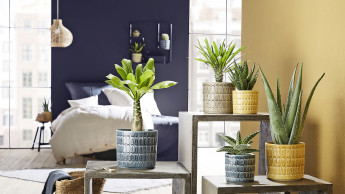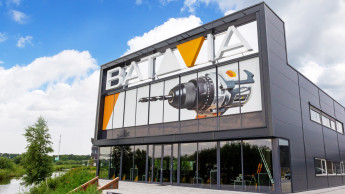This year’s new products include decorative polyurethane elements that create the appearance of original steel girders on walls and ceilings. The product is easy to transport since a 2 m length weighs no more than 1.5 kg. Also new to the Decosa range are white beams, which round off the rustic line of beams in light or dark oak.
New to the Decosa range is this decorative steel girder look-alike in polyurethane.
For Saarpor the process of internationalisation began about ten years ago with the acquisition of firms in France, and later in Poland as well. In the meantime the supplier also has a presence in Czechia, Hungary and Turkey, and can see further opportunities in the Baltic states, in the other states of eastern Europe, and in southern Europe. As Saarpor managing director Ludger Ewers says, “We keep our eyes open for possibilities which will allow us to share the benefits and costs involved in continuing to develop effective distribution and service structures.”
On the one hand the company can offer other firms services such as sales, invoicing, merchandising and store servicing as a whole package or in parts. On the other hand Saarpor is looking for partners so that they can build up new structures. For instance, when it comes to logistics the company has the problem of dealing with products that are light but voluminous, which means that transport costs are comparatively high. The obvious move is to look for a partner who has exactly the opposite problem, moving products that are small and heavy. Ewers considers that the necessary conditions for a successful collaboration must include the partner company being of a similar size and customer orientation and – it goes without saying – the products must not be in direct competition with each other.









